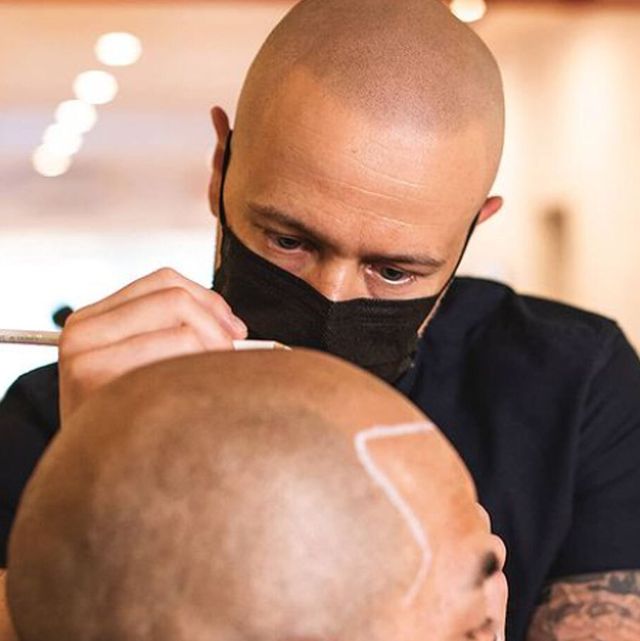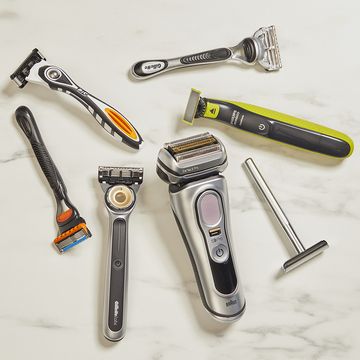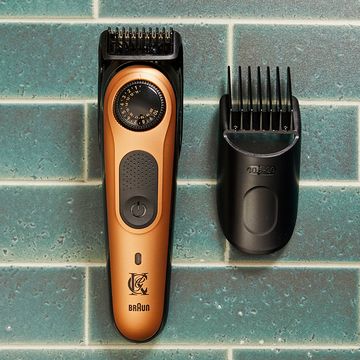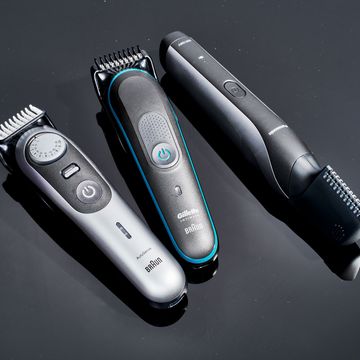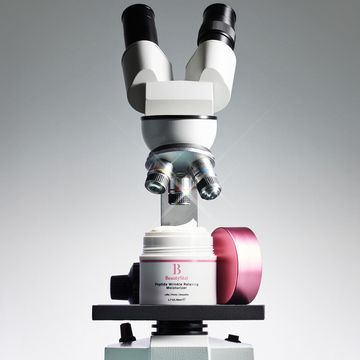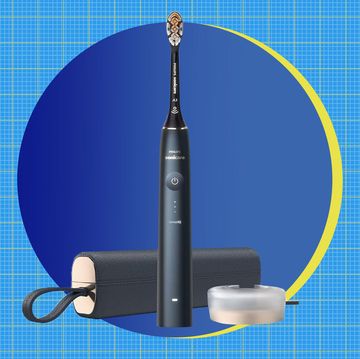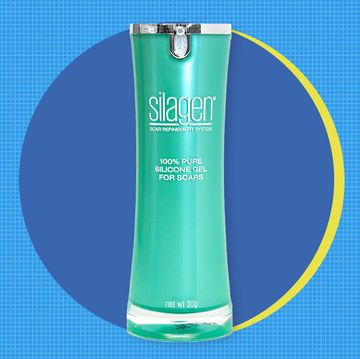Knowing that hair loss is something most guys will go through at some point in their lives doesn’t make it any easier to deal with when it starts happening to you. For the record, two-thirds of men notice thinning by age 35 and by age 50, around 85% show significant loss, according to the American Hair Loss Association. But whether it's a slight recession of your hairline or actual bald spots popping up, the biggest question is always, "What do I do about it?"
There are plenty of options out there—classics like minoxidil and finasteride to newfangled treatments like PRP and high-tech hair transplants. Hell, there are even “hair systems”—fancy words for wigs and toupees. But there isn’t a one-size-fits-all solution, and not every treatment works for every person. Matt Iulo, Director of Scalp Micro USA, knows this all too well. He tried everything short of a hair transplant before discovering scalp micropigmentation on an internet hair loss forum. After getting the treatment himself, he’s helped thousands of men through the scalp micropigmentation process. Could it be right for you, too? This is what you need to know.
What Is a Hairline Tattoo?
While the process is similar to tattooing, scalp micropigmentation is actually the more correct term, according to Iulo. “When someone says head tattoo, they think of a skull and crossbones on the scalp,” he says. “We’re using a microneedle, pigment, and a pointillism technique to create the illusion of hair,” or, more specifically, tiny hair follicles. A trained technician can match the pigment to your hair and can use this technique to camouflage thinning areas, completely bald spots and completely reconstruct a hairline. The finished result typically has the look of a very short buzz cut.
Who Can Get Scalp Micropigmentation?
“The ideal candidate is someone who has lost anywhere from a bit of hair to a significant amount—either is totally bald or in an advanced stage of hair loss,” says Iulo. However, this technique creates the illusion of a buzzed haircut, so whatever hair you do have should ideally be kept very short. “If you’re a guy who needs long flowing locks, this is not the solution because it’s not going to grow,” he says.
Can You Tattoo A Bald Spot?
The short answer is yes. Scalp micropigmentation can work on any amount of thinning and if you only have one bald spot (or a few), the technique can create the illusion of more density underneath the existing hair you have. Depending on how much hair you have, you may even be able to keep it longer to get the density effect. But to get the best look, if you don’t have much hair up top, you should plan to keep the sides short to blend the look, says Iulo.
What Is The Process Like?
The scalp micropigmentation process should always start with a consultation with a licensed professional. In most states, they’ll need to have a tattoo license and Scalp Micro USA also has a specific scalp micropigmentation certificate program, so that’s good to look for, too. During the consultation (in-person or virtual), the artist will look at your hair, scalp and hairline and ask you about your expectations. They’ll also advise you on what they think the best solution is for you. Then follows two to three pigmentation sessions (on average) spaced two weeks apart. During the first session, the artist will cut your hair and spend time mapping out your hairline and plan of action. “Then we micropigment the entire bald area to replicate follicles throughout,” says Iulo. “With each session it’s going to get a little darker and a little fuller.” And as for pain, Iulo says he’s never had any complaints. Unlike a traditional tattoo, “we’re only going about two millimeters deep,” he notes. He classifies it as “slightly annoying” more than painful, and it doesn’t linger after the session ends. “You can go to work afterward if you need to,” he says.
How Long Does It Last?
“Over time, the pigment is designed to lighten and soften,” says Iulo, which is why scalp micropigmentation is classified as semi-permanent rather than truly permanent. But it doesn’t turn other colors or fade drastically like old tattoos. Usually, clients need a touchup no more frequently than every four to six years.
What’s The Maintenance Like?
The real benefit to scalp micropigmentation is that there is very little maintenance. “Most clients need to cut their hair once or twice a week,” says Iulo, to keep it short enough to blend with the pigmentation (remember, this looks like a really short buzz cut). Iulo recommends using a trimmer with no guard to keep it looking tight. And then, apart from moisturizing and sunscreen (“good skincare is good scalp care,” says Iulo), there’s nothing else you need to do.
What Are The Risks?
There aren’t many risks to the actual procedure if you’re working with a trained professional, but if you have underlying skin conditions like heavy psoriasis or severe dandruff that can affect your scalp, make sure to disclose that to your artist. Depending on the condition, this may not be for you.
How Much Does It Cost?
The ultimate price is specific to the hair loss level, how much area needs to be covered and if there is any additional scarring that needs to be camouflaged, says Iulo, but generally the cost falls between $2,500 and $4,000.
